Every winter, I look forward to seeing humpback whales arrive in Hawaii. The best time to see whales in Hawaii is from November to April, when thousands of whales migrate to the warm waters around the islands.

During this peak season, I can spot their playful jumps and powerful tail slaps from many beaches and overlooks.
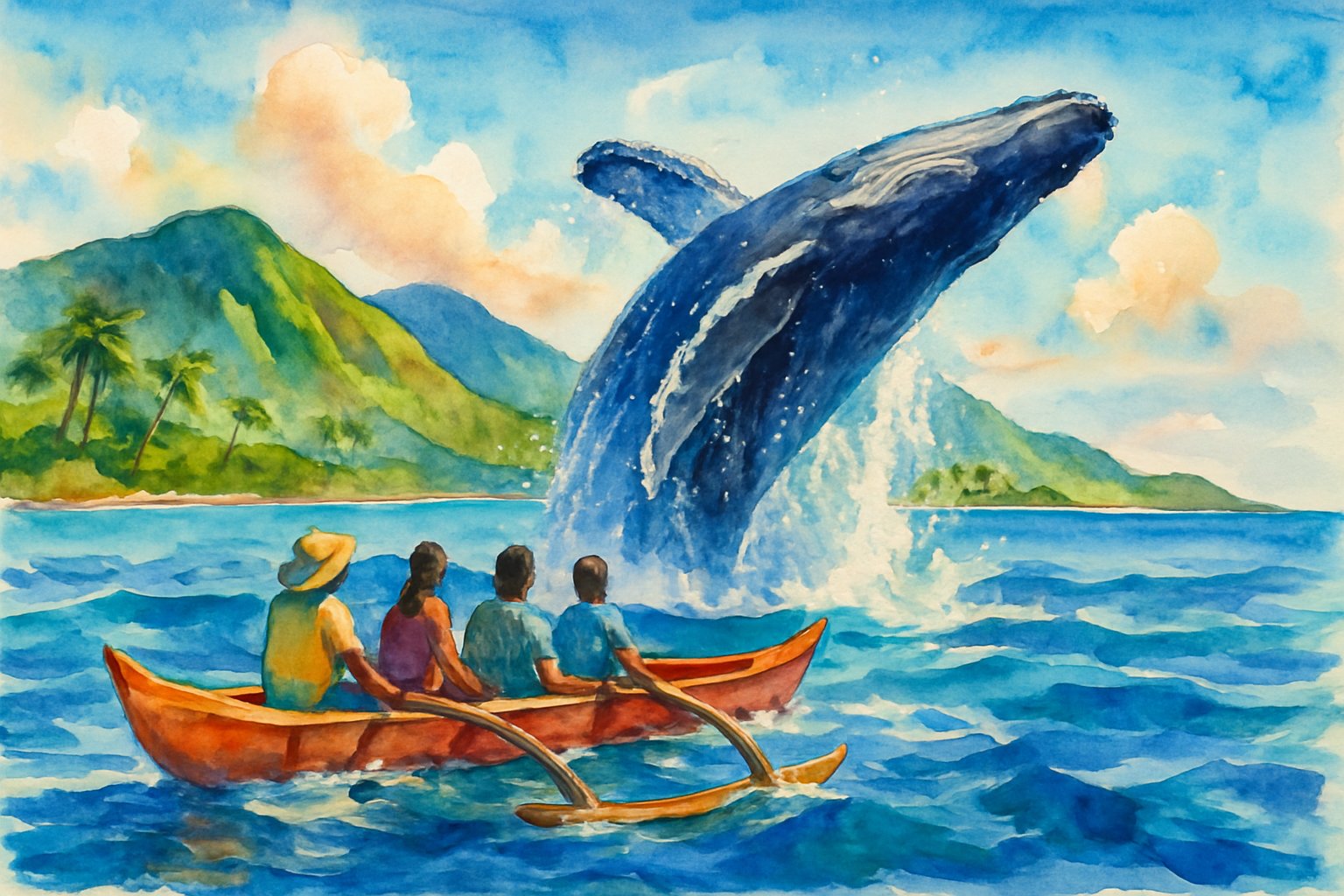
I love that many places let me see whales up close or from the shore. Popular spots include Poʻipū Beach and Kīlauea Lighthouse on Kauaʻi, plus many viewpoints on Maui and the Big Island.
Whale watching gives me an unforgettable experience, and each location has something unique.
Why Hawaii Is a Premier Whale Watching Destination
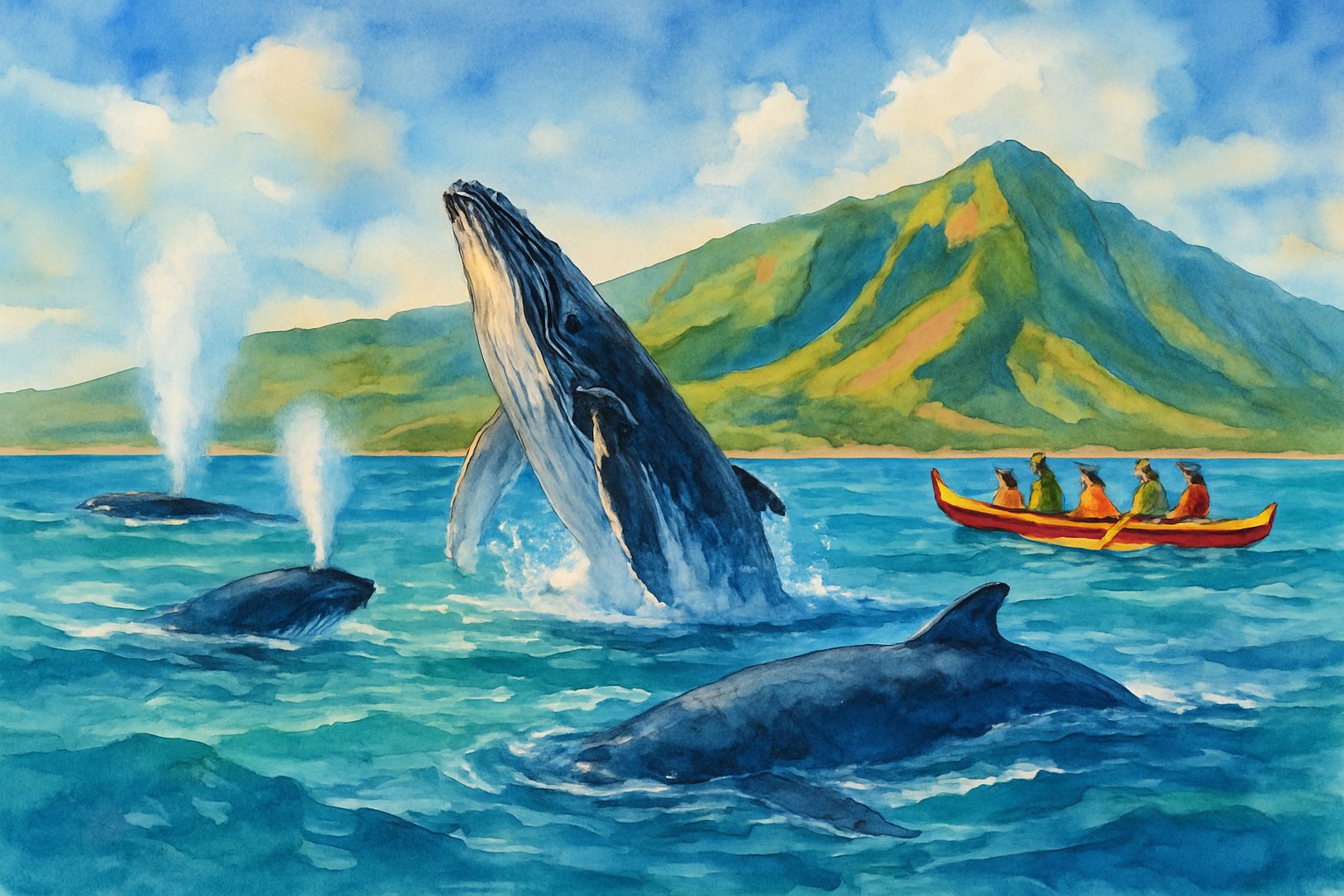
Hawaii’s calm waters, island geography, and rich marine life make it a top spot for whale watching. Every year, thousands of migrating whales gather here, and I can find some of the world’s best viewpoints.
Unique Features of the Hawaiian Islands
Maui and nearby islands have warm, shallow waters that attract whales. The Auʻau Channel, between Maui, Molokai, and Lanai, stands out as one of the best spots to see humpback whales.
Its calm, clear waters make it easy for me to spot whales from land or boat. Whales travel thousands of miles to Hawaii each winter, mostly from December to March, to mate, give birth, and care for their young.
Here, I can regularly see breaching, tail slapping, and mothers swimming with calves. Maui’s reputation as a whale watching destination stands out because the conditions are peaceful and safe for whales and people.
I find helpful viewing points all around the islands, but Maui’s coastal roads and guided tours often give me the clearest and closest views.
Binoculars aren’t required, but they help me enjoy these sights up close.
Brief Overview of Cetaceans in Hawaiian Waters
Cetaceans include whales, dolphins, and porpoises. In Hawaii, the humpback whale is the most famous visitor.
Thousands of humpbacks visit Hawaiian waters every year to breed and give birth. While humpback whales are the stars of winter, Hawaii also has other cetaceans like spinner dolphins, pilot whales, and false killer whales.
Locals and visitors often spot dolphins playing near the shore or riding boat wakes. Seeing these animals in their natural home adds a special magic to my trips.
Hawaii’s cetacean population thrives in warm waters with low boat traffic and strong protections.
From December to March, returning whales fill the islands. This busy season brings scientists, tourists, and nature lovers together to observe these amazing animals.
Whale Watching Seasons in Hawaii
When I plan a whale watching trip, I check when humpback whales migrate and when I’m most likely to see them near the islands. These whales travel thousands of miles from Alaska and gather in Hawaiian waters during certain months.
Peak Whale Watching Months
The official whale season in Hawaii runs from mid-December to mid-May. Hundreds of humpback whales, also called kohola, come to the islands to breed and give birth.
Peak months are usually January, February, and March. During these months, I have a better chance of seeing whale sightings—breaching, tail slapping, or mother whales with calves.
In places like Maui, I can even spot whales from the shore. Whale watching tours fill up fast, so I book early if I want a spot.
If I visit outside of peak season, between November and April, I might still see whales, but sightings are less common. The first whales sometimes arrive in October, but most gatherings happen in winter.
For more details, I check guides on the best months for whale watching in Hawaii.
Seasonal Whale Migration Patterns
Each year, humpback whales travel over 3,000 miles from Alaska to Hawaii. They usually start arriving in the fall and leave by late spring.
In Hawaii, whales don’t eat much because the warm, shallow water doesn’t have enough food. Instead, they give birth, mate, and care for their calves.
Calves are born in these protected waters and get strong enough to swim back to Alaska. The migration follows a regular pattern.
I see large groups earlier and later in the season, but most activity is between January and March. This is my favorite time to watch whales leap and socialize near the islands.
Timing Your Visit for Best Whale Sightings
To have the best chance at seeing humpback whales, I plan my trip between January and March. This is the busiest time for whale watching tours and shoreline whale sightings, especially on Maui, Kauai, or the Big Island.
I also pay attention to the time of day. Early morning and late afternoon usually have calmer seas and better light for spotting whales.
Windy afternoons can make the ocean choppy and harder for me to see whales clearly.
Here’s my short checklist for the best experience:
- Visit between January and March
- Choose a well-known whale watching tour
- Bring binoculars for shore viewing
- Wear sunscreen and bring a hat
These tips help me enjoy amazing whale watching trips and spot playful pods of kohola up close.
Top Locations for Whale Watching in Hawaii
I always find the best whale watching in Hawaii at certain spots during peak season. Maui and the Big Island offer high chances to see humpback whales breaching, spouting, and tail-slapping near the shore.
Maui: Whale Watching Capital
When I think of whale watching, Maui is the first place that comes to mind. The shallow waters between Maui, Molokai, and Lanai are ideal for humpback whales, especially from December through April.
I see the most activity in this area, which makes it one of the top whale watching destinations in the world. Popular spots include Maalaea Bay and Lahaina Harbor, where I can join a boat tour or simply watch from the beach.
Kaanapali Beach lets me spot whales from the shore. Whale-watching tours leave daily and often guarantee sightings during peak months.
I also enjoy the educational displays at the Pacific Whale Foundation. The staff shares information about whale habits and migration.
If I want to see whales with less effort, I go to the lookout at McGregor Point. In my experience, Maui never disappoints for whale encounters.
Big Island Viewing Hotspots
The Big Island gives me a different setting for whale watching, with rugged shorelines and fewer crowds. I usually visit the Kohala Coast, which stretches along the northwest part of the island.
This area has deep waters close to shore, attracting whales during their yearly migration. Spencer Beach Park and Puukohola Heiau National Historic Site are great for shore-based whale spotting.
I can also drive along Queen Kaahumanu Highway and stop at scenic pullouts for ocean views.
Boat tours from Kailua-Kona let me get closer, and guides share insights about whale behaviors. I always bring binoculars because whales often swim farther out.
Even from land, I spot blows and occasional breaches, especially in the mornings when the water is calm.
Exploring Island-Specific Whale Watching Experiences
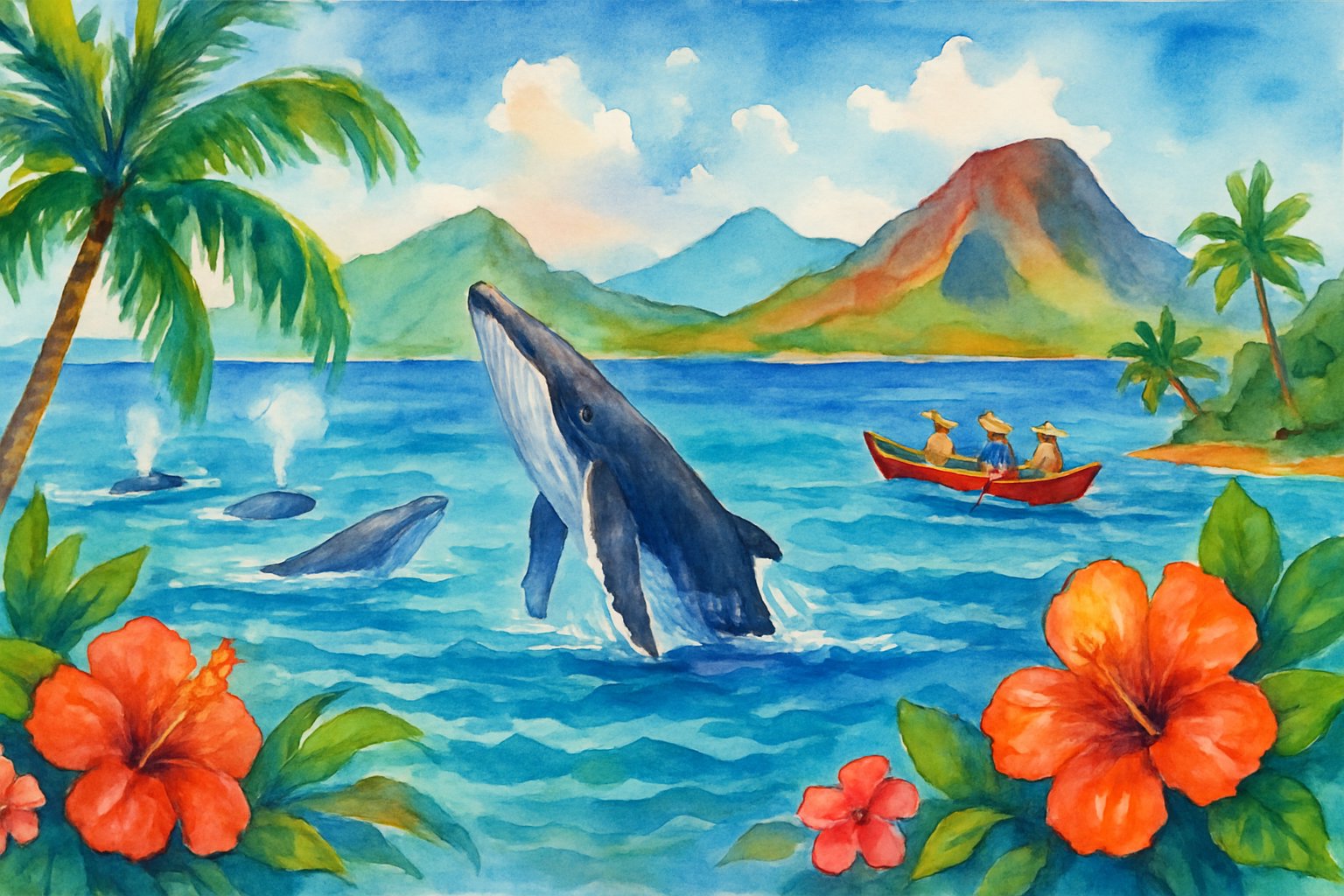
Each Hawaiian Island offers a unique setting for whale watching. I can choose from boat tours, lookouts, and easy-to-access beaches to spot these amazing animals.
Oahu’s Accessible Whale Watching Adventures
On Oahu, I join guided boat tours from Honolulu or head out on my own to see whales from the shore. The island has many easy spots, like the Makapu’u Lighthouse Trail.
The lookout there gives me sweeping ocean views and is a favorite during the winter whale season. For a family-friendly option, I visit Sandy Beach or the Hanauma Bay area.
These spots let me see whales between December and April, often without binoculars. Local tour operators run boat trips from Waikiki and Ko Olina, making it easy for me to get on the water.
Many tours include information about the whales and tips for spotting them.
Here’s a quick list of Oahu’s best places for whale watching:
- Makapu’u Lighthouse Trail
- Hanauma Bay Lookout
- Waikiki Beach (boat tours)
- Ko Olina Marina (boat tours)
Kauai’s Scenic Whale Watching Sites
Kauai is famous for its natural beauty, and whale watching here is no exception. I love the viewpoints on the north and south shores because they are high enough to give me great whale watching opportunities.
Poipu Beach on the south shore is one of my favorite spots. The area around Kilauea Lighthouse on the north shore is another top place to set up with binoculars and get a wide view of the ocean.
In winter and early spring, I often see humpback whales breaching or tail slapping from these spots.
If I want to get closer, small boat tours leave from Nawiliwili Harbor. Guides share tips and explain whale behavior.
The calm surroundings and cliffs make these tours memorable.
Here’s a table of Kauai’s top whale watching places:
| Location | Type | Best Time |
|---|---|---|
| Poipu Beach | Shore access | Dec – Apr |
| Kilauea Lighthouse | Lookout | Dec – Apr |
| Nawiliwili Harbor | Boat tours | Dec – Apr |
Types of Whale Watching Tours
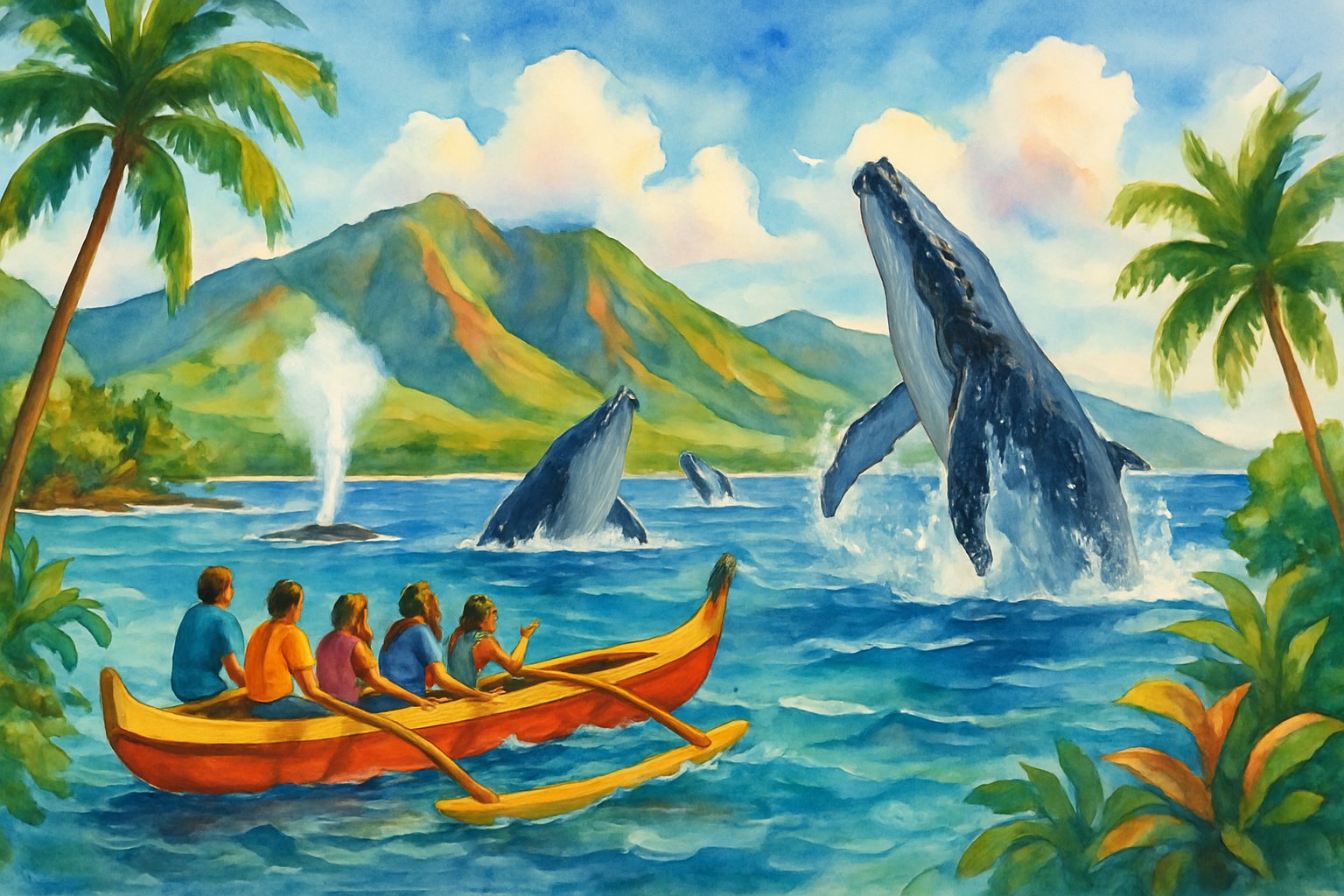
I can choose from different tours to see whales in Hawaii. Each type offers a unique way to get close to these incredible animals and enjoy Hawaii’s ocean in a safe and exciting way.
Catamaran and Sailing Cruises
When I book a catamaran or sailing cruise, I enjoy comfort, stability, and great views. These boats are wide and steady, so I feel less seasick and have more space to walk around.
Catamarans often include shaded areas, drinks, snacks, and bathrooms. A sailing adventure lets me quietly move across the water.
With only the wind moving the boat, the trip feels peaceful and I can often hear whales breathe or sing. Many cruises leave at sunrise or sunset when whales are most active.
A knowledgeable crew usually leads the cruise and teaches me about the whales I see. I have a good chance of spotting humpback whales and sometimes dolphins or flying fish.
Some tours focus only on whale watching, while others offer extras like food, live music, or a swim stop.
Here’s a quick table of what to expect:
| Feature | Catamaran and Sailing Cruises |
|---|---|
| Boat Type | Catamaran, sailboat |
| Comfort | High (shaded areas, snacks, restrooms) |
| Group Size | Medium to large |
| Extras | Often food, drinks, music, swim stops |
| Animal Encounters | Whales, sometimes dolphins, sea birds |
Guided Snorkeling and Ocean Recreation Tours
If I want to get in the water too, a guided snorkeling and ocean recreation tour is a great choice. These tours mix whale watching with more ways to have fun in the ocean.
I might snorkel over coral reefs, try paddle boarding, or swim in clear water. Guides make sure I’m safe and show me how to use the equipment.
The boats often visit different spots so I can see whales and sea life like turtles or colorful fish. Sometimes I even hear whale songs while snorkeling underwater.
Most tours do not let me get very close to the whales while swimming because Hawaiian law protects them. Still, being near the ocean and the whales feels magical.
I always bring a towel, sunscreen, and a waterproof camera.
Here’s a quick list of highlights from these tours:
- Guided snorkeling lessons
- Chance to paddle board or kayak
- Explore new parts of the coastline
- Opportunity to see coral, turtles, and smaller fish
- Education about ocean safety and marine life
Some tours run all morning or afternoon, giving me time to enjoy both whale watching and water activities.
Common Whale and Marine Life Encounters
On the waters around Hawaii, I can see many types of whales, dolphins, and other sea creatures. Each outing offers a chance to witness unique and sometimes rare marine life behaviors up close.
Spotting Humpback Whales and Kohola
When I go whale watching in Hawaii during the winter, I often see humpback whales—known locally as kohola. These gentle giants migrate from Alaska to Hawaii from November through April.
The best chance to see them is between January and March. Maui has the highest number of humpback whale sightings, but I can also spot them near Kauai, Oahu, and the Big Island.
I sometimes see spectacular behaviors such as breaching, tail slapping, and blowing spouts. Humpback whales can grow up to 50 feet long.
Seeing a mother with her calf is common in the calm Hawaiian waters. Watching these whales glide or launch their tails into the air always feels exciting.
Guided boat tours often give me the best views and teach me about the whales and their migration patterns. I also visit popular viewing sites such as Poʻipū Beach and Kīlauea Lighthouse.
Possible Killer Whale and Spinner Dolphin Sightings
While killer whales—also called orcas—are not common in Hawaii, I sometimes spot them farther offshore during deep-sea trips. Encounters are rare, but seeing their tall dorsal fins or black-and-white coloring is unforgettable.
Spinner dolphins are much easier to find, especially in the mornings. These dolphins travel in groups and are named for their spinning leaps above the surface.
I usually see them near the shorelines of the Big Island and Oahu, where they come to rest during the day. Spinner dolphins are smaller than whales, between 4 and 7 feet long, and are very social and curious around boats.
If I’m lucky, I might spot both whales and dolphins on a single trip.
Whale Behavior and Communication
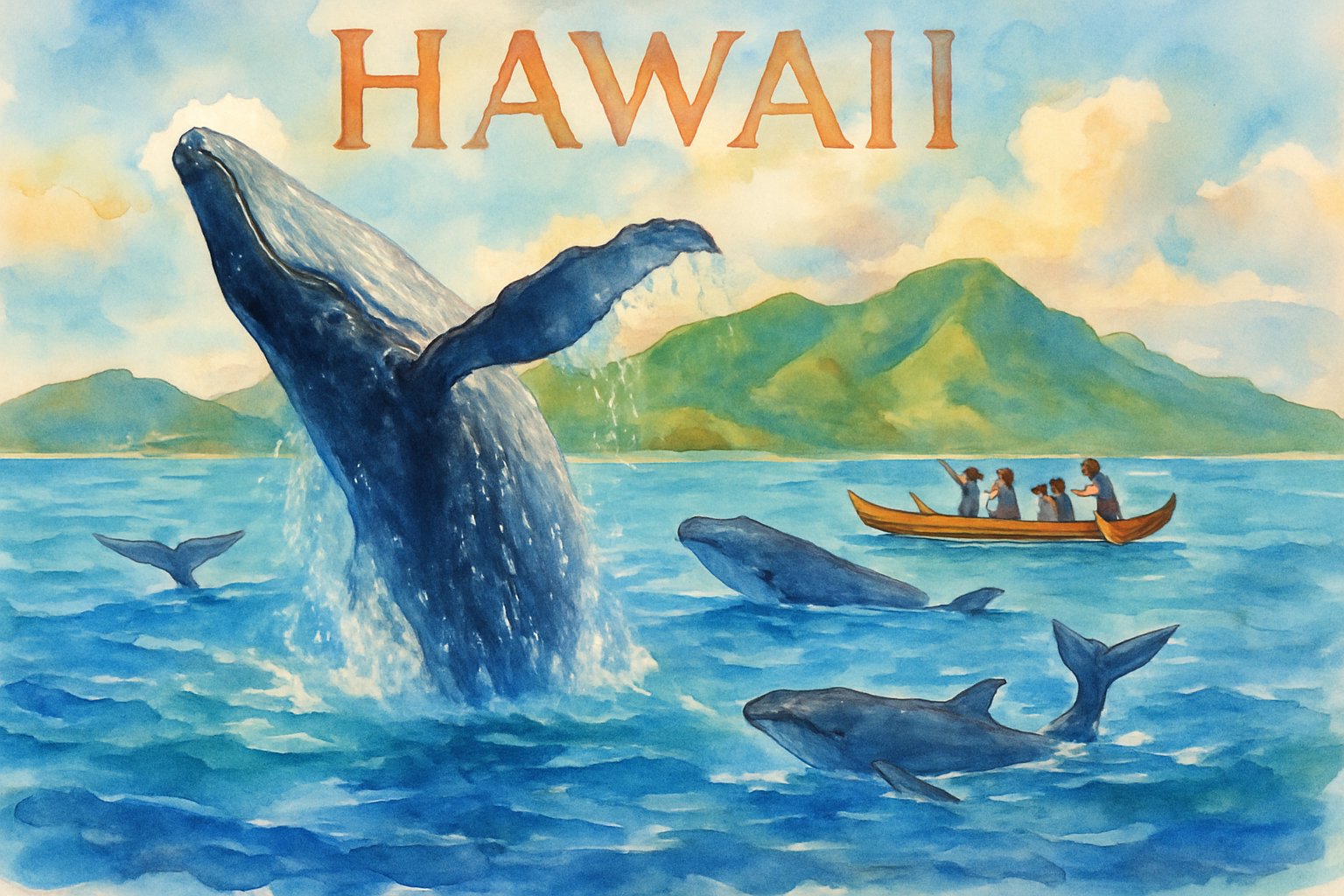
When I watch humpback whales in Hawaii, I notice unique behaviors and different ways they communicate. Their movements and sounds show me how they interact.
Breaching, Tail Slaps, and Other Behaviors
Humpback whales show off a variety of surface actions. Breaching is when a whale leaps out of the water and lands with a huge splash.
Whales often breach when they feel playful or want to send a signal. Tail slaps—also called lobtailing—are another common move.
In this behavior, whales lift their tail flukes above the water and slam them down, making a loud noise. These powerful splashes can warn rivals or get attention.
I sometimes see whales slap their pectoral fins too. Whales can also spyhop, poking their heads above water to look around.
I find these actions exciting, especially during migration season in places like Maui. This guide to different whale behaviors explains more.
When I watch a group of whales, I see how these moments help with bonding, safety, and mating displays.
Listening to Whales With a Hydrophone
Humpback whales use sound to communicate underwater. I use a hydrophone—a special underwater microphone—to listen to their songs.
These songs are complex, made up of different notes and rhythms. Humpback males sing to attract mates and maybe to mark their territory.
Whale songs can travel for many miles through the ocean. Short, loud sounds called whale calls warn, greet, or direct each other.
When I listen with a hydrophone while whale watching, I get a new perspective on how these animals talk. Hearing humpback songs as they move between the Hawaiian islands is a highlight of any trip.
Hydrophones let me experience the hidden conversations happening below the surface.
Conservation Efforts and Responsible Whale Watching
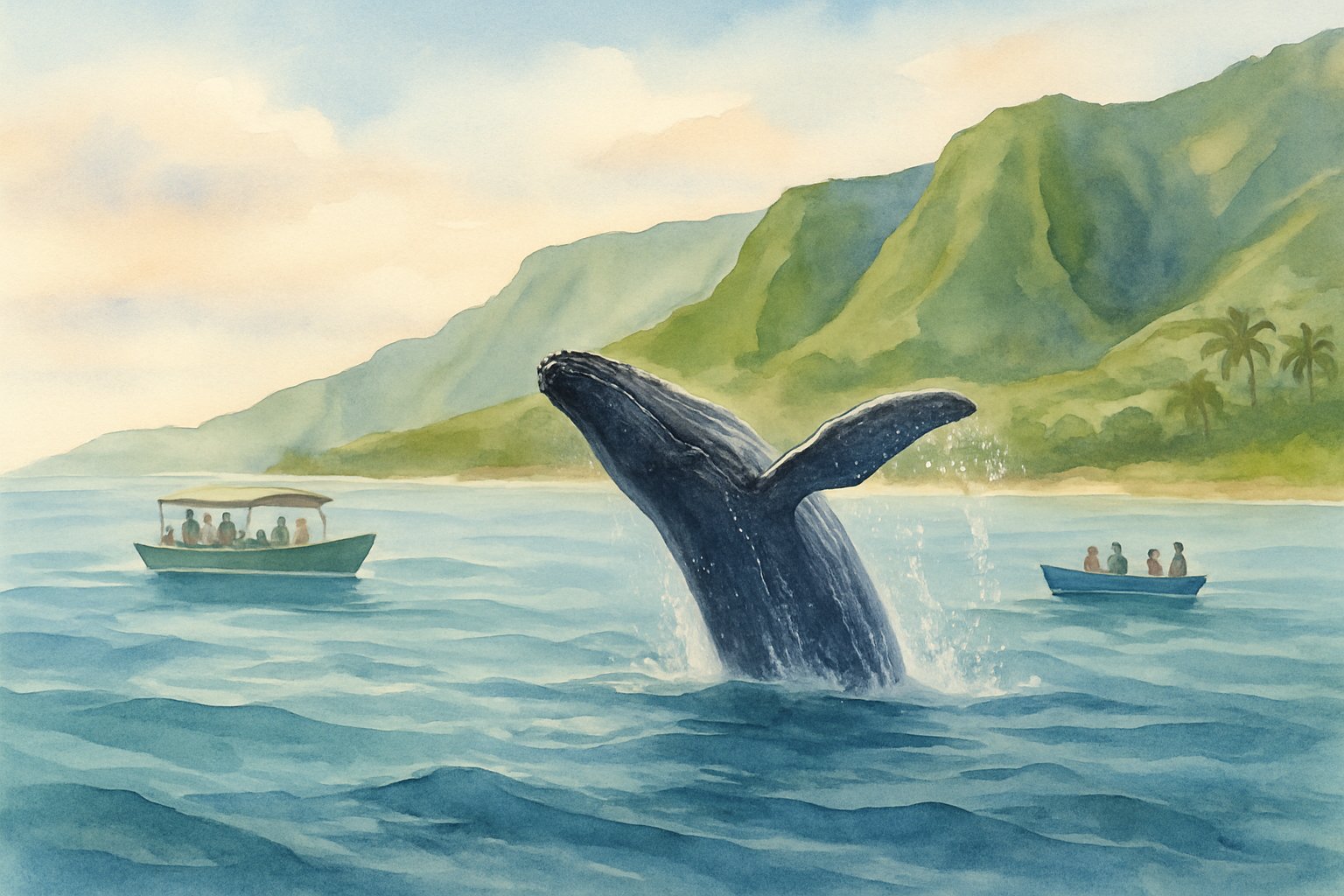
Protecting whales in Hawaii is very important. I follow certain rules to make sure my actions do not harm the whales or their environment.
NOAA Guidelines for Whale Watching
NOAA provides clear guidelines for whale watching in Hawaii. I always keep a safe distance of at least 100 yards from all whales.
This helps avoid disturbing them. If I am on a boat, I move slowly and avoid sudden changes in speed or direction near whales.
I do not chase, encircle, or separate whales from their group. I also keep noise low.
NOAA asks people not to swim with or feed the whales. Getting too close may seem fun, but it can stress the animals and lead to dangerous situations.
I always check the latest rules before my trip by visiting the NOAA whale watching guidelines.
Here’s a quick list of key NOAA rules:
- Stay 100 yards away
- Move slowly
- Do not feed or chase whales
- Keep noise down
Role of Hawaiian Islands Humpback Whale National Marine Sanctuary
The Hawaiian Islands Humpback Whale National Marine Sanctuary helps protect humpback whales and their habitat. I learn a lot from the sanctuary’s programs, which teach me how to safely enjoy whale watching.
The sanctuary runs research, education, and outreach programs. They train guides and boat operators in best practices so we know how to spot and avoid harming whales.
I use their shoreline viewing tips to watch whales from places like Poʻipū Beach and Kīlauea Lighthouse without disturbing them. Check out more tips from the Hawaiian Islands Humpback Whale National Marine Sanctuary.
By following their advice, I help keep Hawaii’s whales safe.
Planning Your Whale Watching Adventure
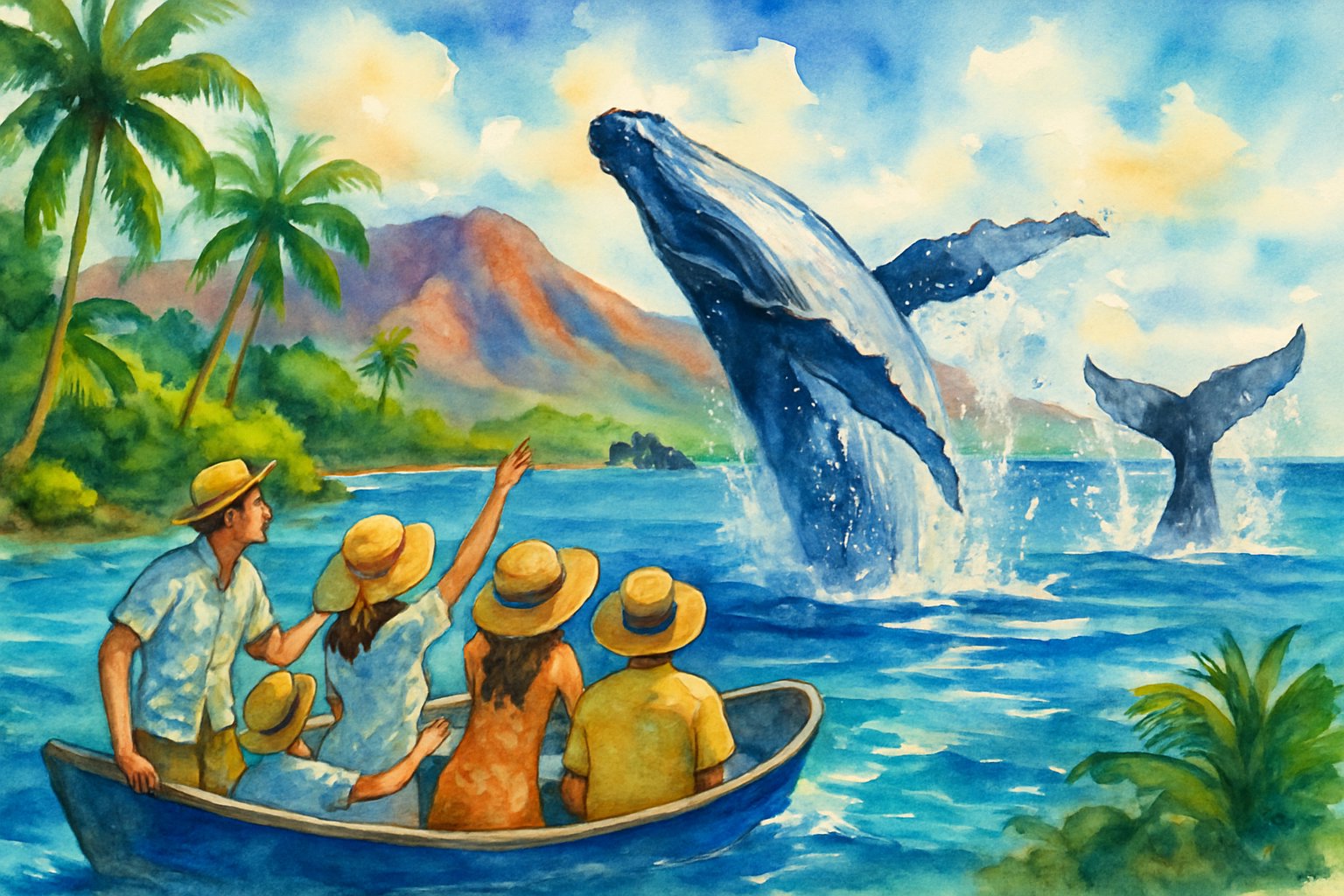
Booking a whale watching trip in Hawaii takes some planning. I always want to pick the right tour and pack the best things for a fun and safe experience on the water.
Tips for Choosing the Best Tour
I look for tours with strong safety records and experienced guides. Learning about Hawaii’s whales from a guide who knows the ocean makes a big difference.
If I want a closer look, I check if the boat has fewer passengers for better views. Timing matters too.
The best season for whale watching in Hawaii is December through April, with January and February as the peak months. Tours in the early morning often see calmer water and more whales.
Some popular places for tours are Maui, Oahu, Kauai, and the Big Island. When I pick a tour, I check if it offers extras like snacks or photo tips.
I also read recent reviews and see if any eco-friendly practices are mentioned. Many tours focus on protecting marine life and follow rules to keep whales safe.
What to Bring and Expect on the Day
I always bring sun protection—a hat, sunglasses, and reef-safe sunscreen. Since the boat ride can get chilly or windy, I pack a light jacket or windbreaker.
I carry my camera or phone with a zoom lens to capture whale tails and breaches. Before heading out, I make a simple list:
- Water bottle
- Small snacks
- Seasickness medicine if needed
- Extra batteries or power bank
Boats often leave on time, so I arrive early. I follow the crew’s instructions and respect distance rules to help keep Hawaii’s ocean recreation respectful and fun for everyone.
For location ideas, I use this handy guide to whale watching in Hawaii.




